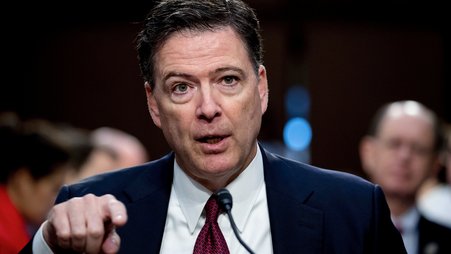
Today, we are revealing—for the first time—the Justice Department’s rules for targeting journalists with secret FISA court orders. The documents were obtained as part of a Freedom of Information Act lawsuit brought by Freedom of the Press Foundation and Knight First Amendment Institute at Columbia University.
While civil liberties advocates have long suspected secret FISA court orders may be used (and abused) to conduct surveillance on journalists, the government—to our knowledge—has never acknowledged they have ever even contemplated doing so before the release of these documents today.
The FISA court rules below are entirely separate from—and much less stringent—than the rules for obtaining subpoenas, court orders, and warrants against journalists as laid out in the Justice Department’s “media guidelines,” which former Attorney General Eric Holder strengthened in 2015 after several scandals involving surveillance of journalists during the Obama era.
When using the legal authorities named in the “media guidelines,” the Justice Department (DOJ) must go through a fairly stringent multi-part test (e.g. certifying that the information is critical to an investigation, that it can’t be obtained by other means, and that the DOJ exhausted all other avenues before doing so) before targeting a journalist with surveillance. They must also get approval from the Attorney General.
With the FISA court rules, there is no multi-part test that we know of. The DOJ only must follow its regular FISA court procedures (which can be less strict than getting a warrant in a criminal case) and get additional approval from the Attorney General or Assistant Attorney General. FISA court orders are also inherently secret, and targets are almost never informed that they exist.

The documents raise several concerning questions:
How many times have FISA court orders been used to target journalists? The memo that accompanies these rules strongly suggests that there have been journalists subject to FISA court orders in the past (“Consistent with this determination, such applications [targeting members of the media] shall be reviewed by the Attorney General or Deputy Attorney General“) and that it’s entirely possible there are such orders active now. How many journalists have been targeted total, and are any currently under a FISA investigation?
Why did the Justice Department keep these rules secret -- even their very existence -- when the Justice Department updated its “media guidelines” in 2015 with great fanfare? FISA Court orders are exempt from the media guidelines yet apparently these rules existed in secret at least since then.
If these rules can now be released to the public, why are the FBI’s very similar rules for targeting journalists with due process-free National Security Letters still considered classified? And is the Justice Department targeting journalists with NSLs and FISA court orders to get around the stricter “media guidelines”?
We initially filed our FOIA lawsuit in part because we knew the DOJ had already kept the use of National Security Letters against members of the media exempt from the “media guidelines.” Those separate—and still secret rules—are in a redacted appendix in the FBI’s Domestic Investigations and Operations Guide (DOIG). A version was leaked to the Intercept in 2016 and they read very similar to these unredacted FISA court rules.
The fact that these were kept secret during the Obama administration is cause for great concern. Now, President Trump has repeatedly stated his hatred for the media, and his Attorney General Jeff Sessions has already tripled the amount of leak investigations since the Obama era (when they were already at an all time high). Has the Trump administration used FISA court orders to target journalists with surveillance? If so, when?
This is critically important information at a time when press freedom has been under threat from the government, and its role in our democracy has never been more important. We hope the Justice Department will answer these questions immediately.
Special thanks to our co-plaintiffs and legal counsel for this case, the Knight First Amendment Institute at Columbia University. you can read their full analysis of the secret FISA rules here. We hope this is just the first of many documents from this still-running FOIA case about the government’s surveillance of journalists we will be able to share with the public in the coming months.
You can read the full rules below (starting on page 10 of the PDF).




